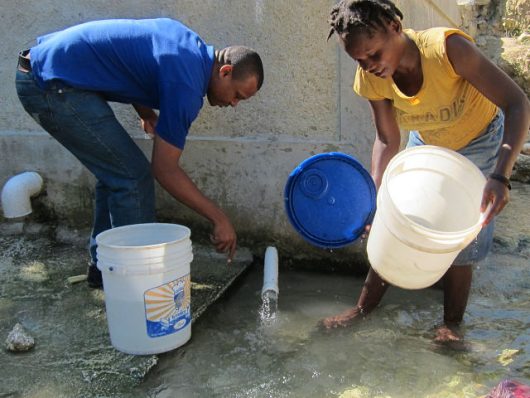Top 10 Facts about Living Conditions in Haiti

Misconceptions about life in Haiti reach all around the world. After the devastation of the island in 2010 due to a magnitude seven earthquake, many citizens were killed or left homeless and scared. The image of Haiti in the eyes of the world has become that of a poor country stuck in a cycle of poverty. But, what are the living conditions in Haiti actually like? Here are the top 10 facts about living conditions in Haiti.
Top 10 Facts about Living Conditions in Haiti
- Rural life is much more difficult – A lot of attention is given to the capital city of Port-au-Prince in the news, but the living conditions in Haiti in rural areas show higher poverty rates than in the city. In the city, poverty rates declined between 2000 and 2012; however, they remained the same in rural areas, which often receive less help rebuilding after natural disasters and have less access to basic necessities.
- Tropical storms disrupt life – The major recurring disasters that strike Haiti are tropical storms. Because of its position in the Caribbean, hurricanes and other storms can often cause problems, destroying property as Haitians are trying to rebuild and contaminating water sources.
- Drinking water can be unsafe – Cholera is very common in both rural areas and cities due to contamination in the water. At most, 48 percent of the population has access to safe sanitation, but that is only in urban areas. In rural areas, fewer than 20 percent have access to clean water and sanitation. Malaria also poses a risk to many. These diseases can be fatal without access to healthcare.
- Hurricane Matthew in 2016 continues to affect crops and housing – Hurricane Matthew affected 2.1 million Haitians with the elderly being hit the hardest. Habitat for Humanity has provided housing kits and building materials to help elders rebuild since they often are responsible for other family members and have greater difficulty finding work. Additionally, since Haiti imports most of its food, the few crops that are grown are often destroyed in natural disasters like Hurricane Matthew, which has a strong impact on the elders who require good nutrition and better living conditions in Haiti.
- Environmental concerns affect the people – According to Human Rights Watch, “As of September 2017, authorities had failed to assist many of the nearly 38,000 individuals still living in displacement camps since the 2010 earthquake.” These people have neither been resettled nor allowed to return to their original homes. The living conditions in Haiti for these individuals are most threatened by widespread deforestation, pollution and limited access to safe water.
- Housing shortages are a big problem – Even before Hurricane Matthew and the 2010 earthquake, overcrowding and lack of housing were major issues, mainly in Port-au-Prince and other cities. Destruction has exacerbated this, forcing many into more cramped and unhealthy conditions, often living in tents and makeshift houses.
- Habitat for Humanity has made great strides in helping rebuild – Right now, Habitat for Humanity, in addition to sending supplies and volunteers, has been focusing on creating long-term renewal in Haitian housing. In 2014, they launched The Canaan Project, which focuses on community development and working with families to rebuild their homes.
- Tree planting offers hope against deforestation – Deforestation has been a big problem for Haiti, especially when it comes to using wood for fuel and cooking. It is being combated by government efforts to stop illegal deforesting and a plan to plant more than 10,000 hectares of land, which was implemented in 2013. The increase in trees is also expected to help lessen the effects of natural disasters by decreasing mudslides and helping protect water sources.
- Poverty has decreased – While almost 60 percent of people in Haiti were still living below the poverty line in 2012, this number is still an improvement on the estimated 80 percent living in poverty in 1999. This rate of improvement is promising to Haitians, and if it continues over the next decade, Haiti may no longer be considered the poorest country in the Western Hemisphere.
- Literacy efforts are helping to educate Haitians – The key to lifting Haiti out of poverty is educating the workforce since there is a severe lack of skilled laborers. The labor force consists of about 4.6 million people, but most of these are unskilled laborers. Haiti’s literacy rate is currently only 61 percent, but charities like World Renew are working to help adults learn to write and read competently in order to find better jobs and improve the education of the younger generations.
Haitians have a long history of surviving repeated setbacks. In spite of some of the negative facts about living conditions in Haiti, many charitable organizations are working on the ground to change the status quo. Haiti is seeing improvement and has a real chance of overcoming some of the adversity it has seen and growing into a strong nation.
– Grace Gay
Photo: Flickr
